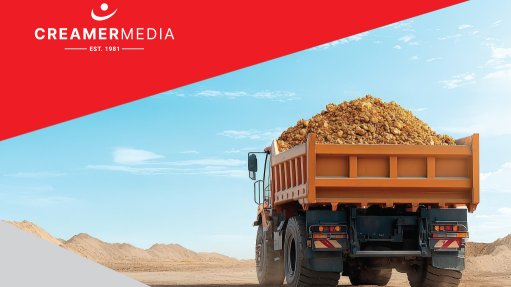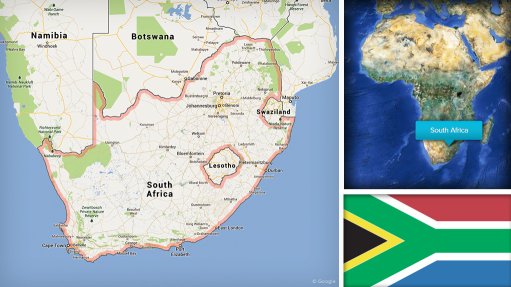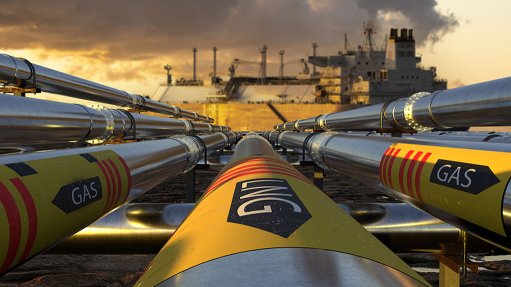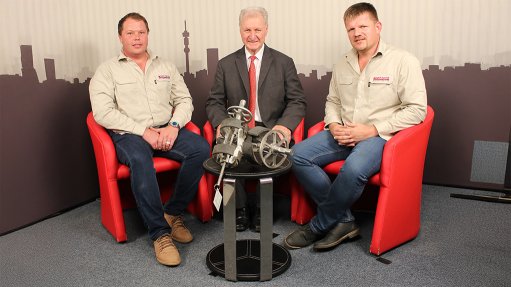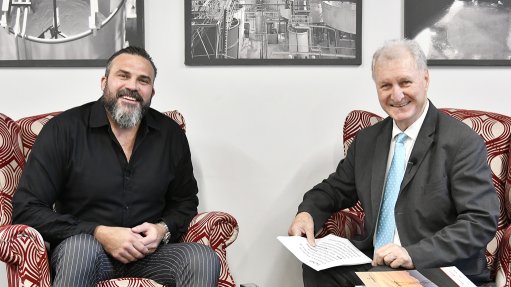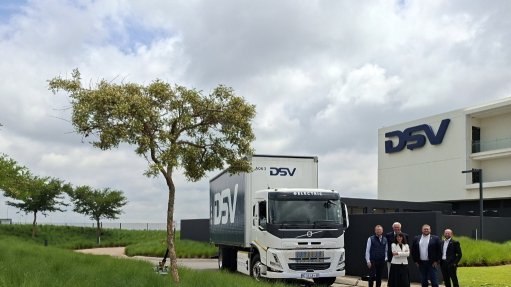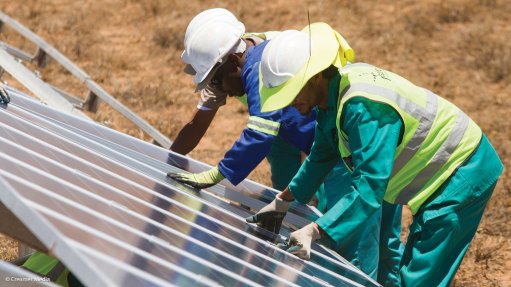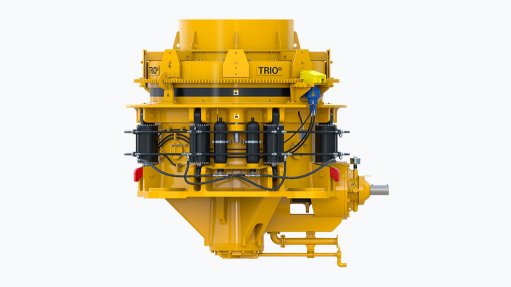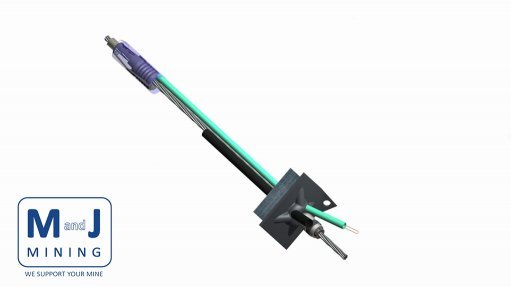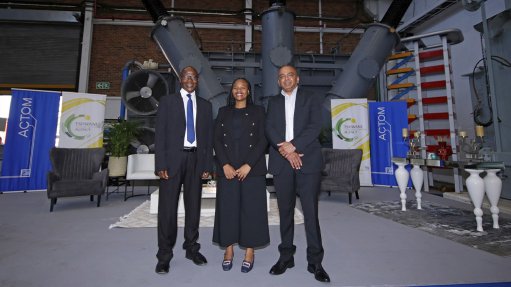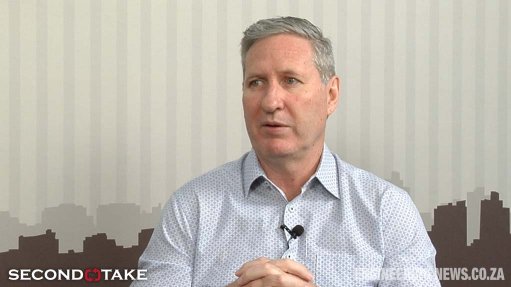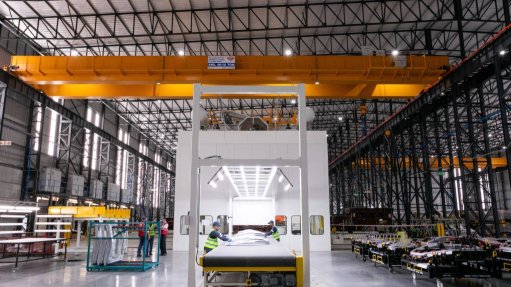concor nurtures karoo biodiversity at karreebosch wind farm project

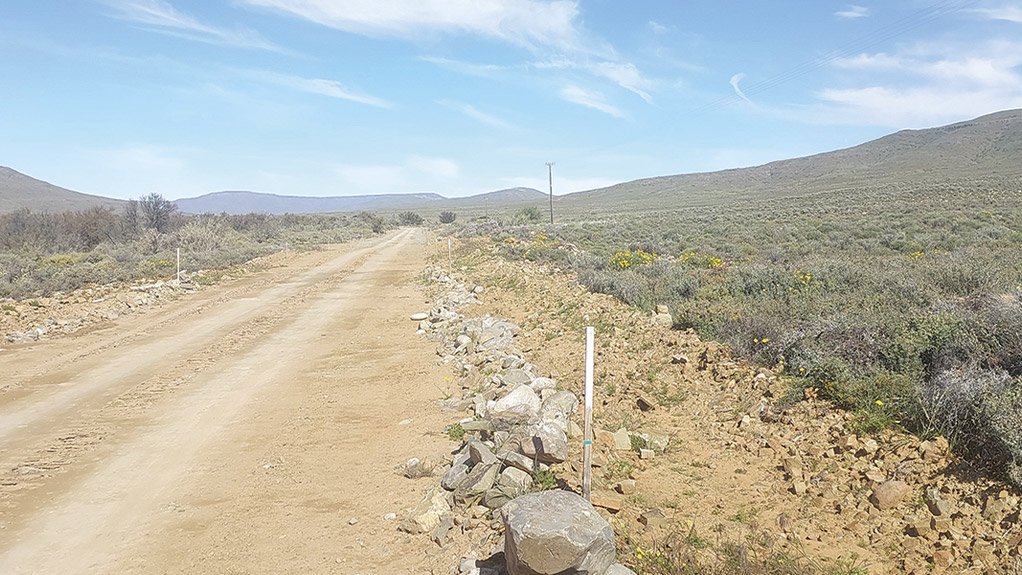
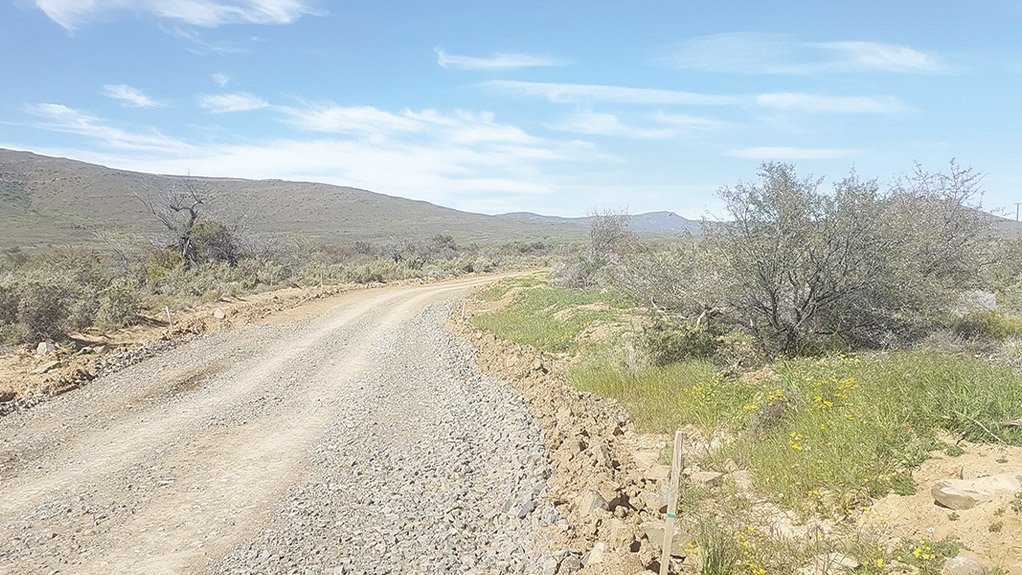
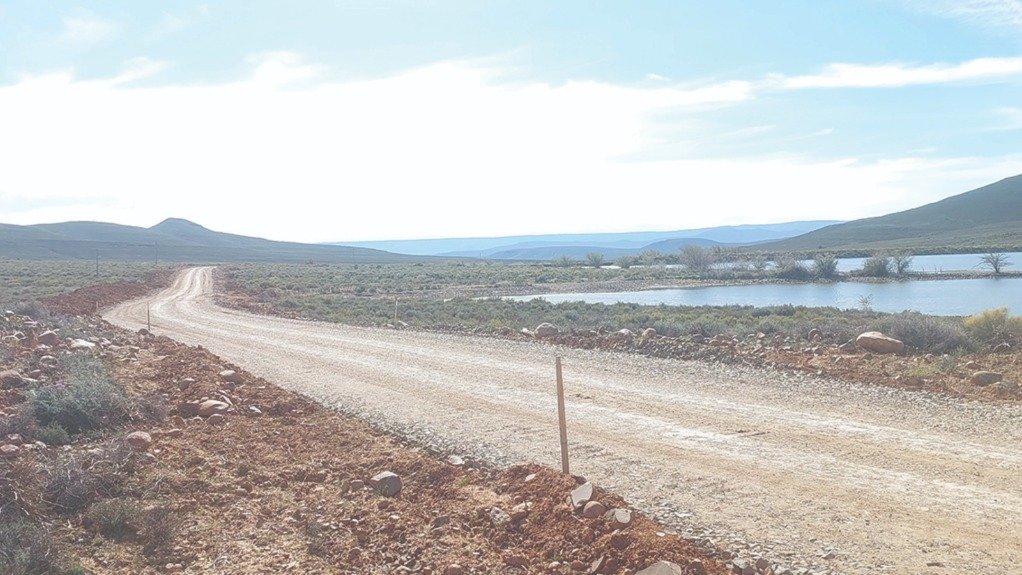
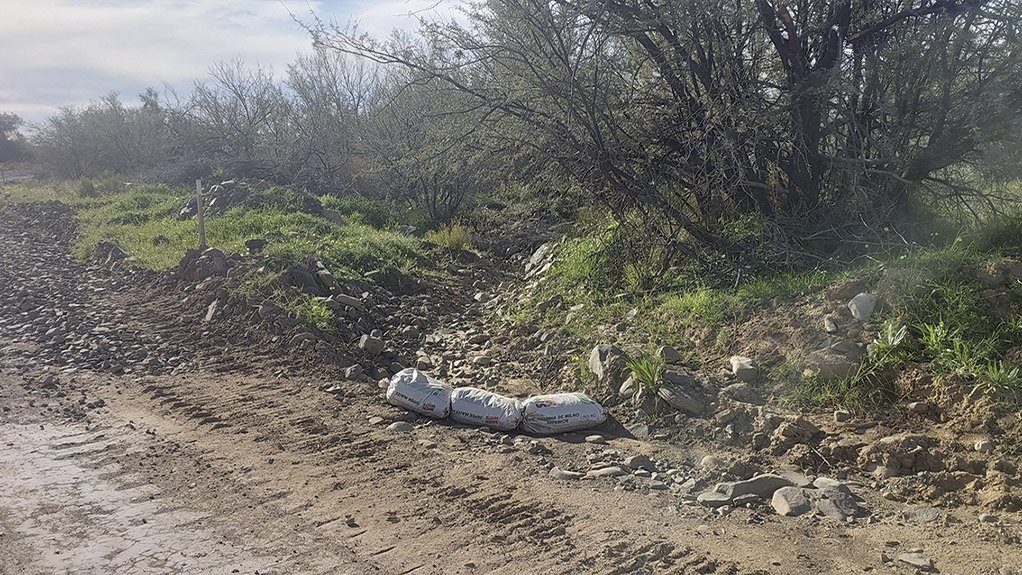
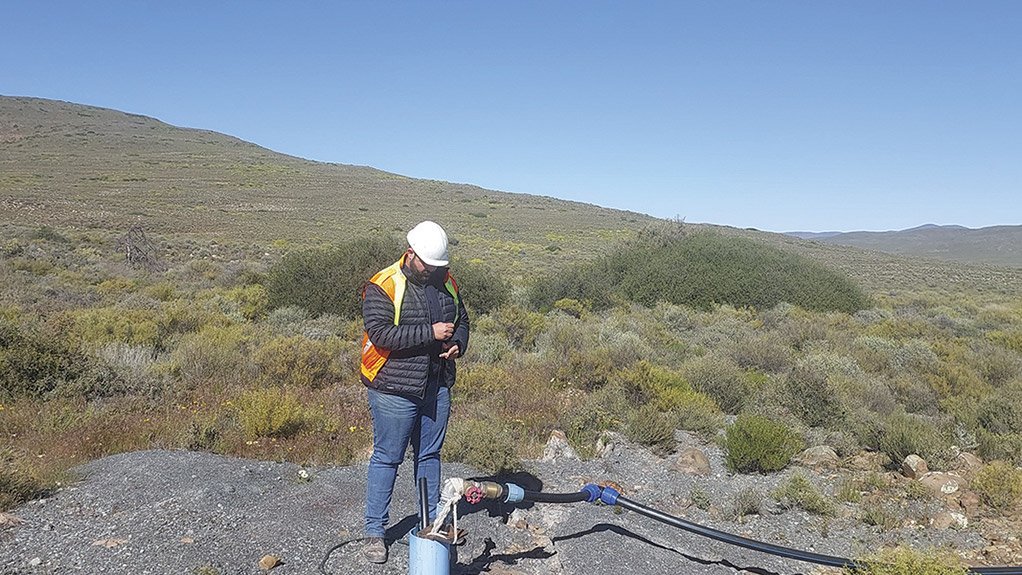
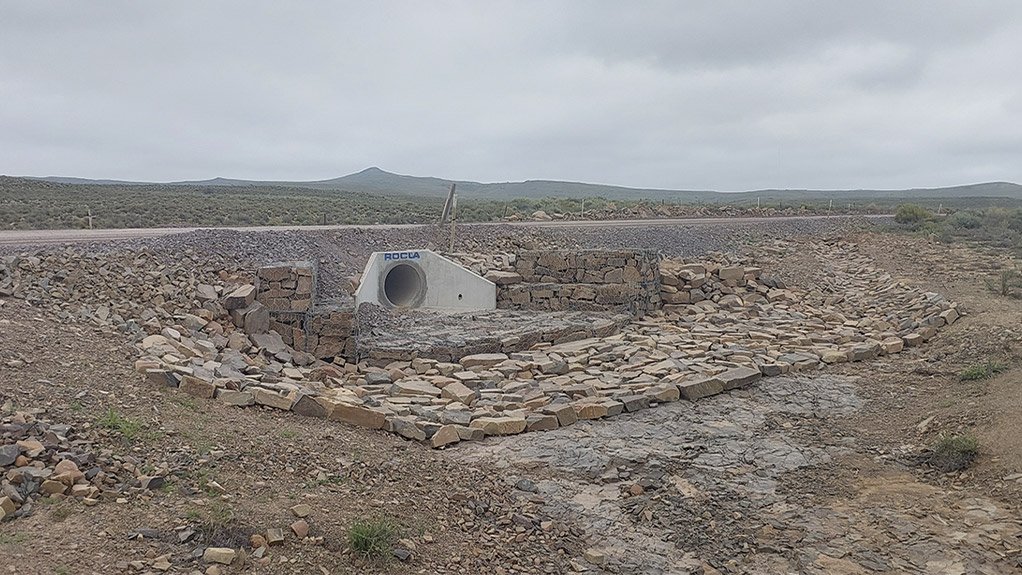
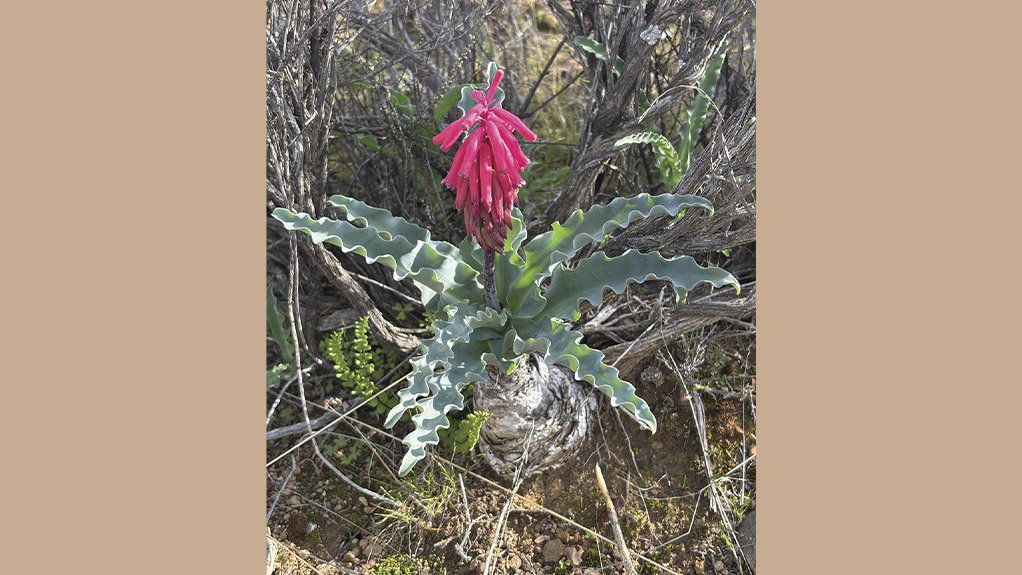
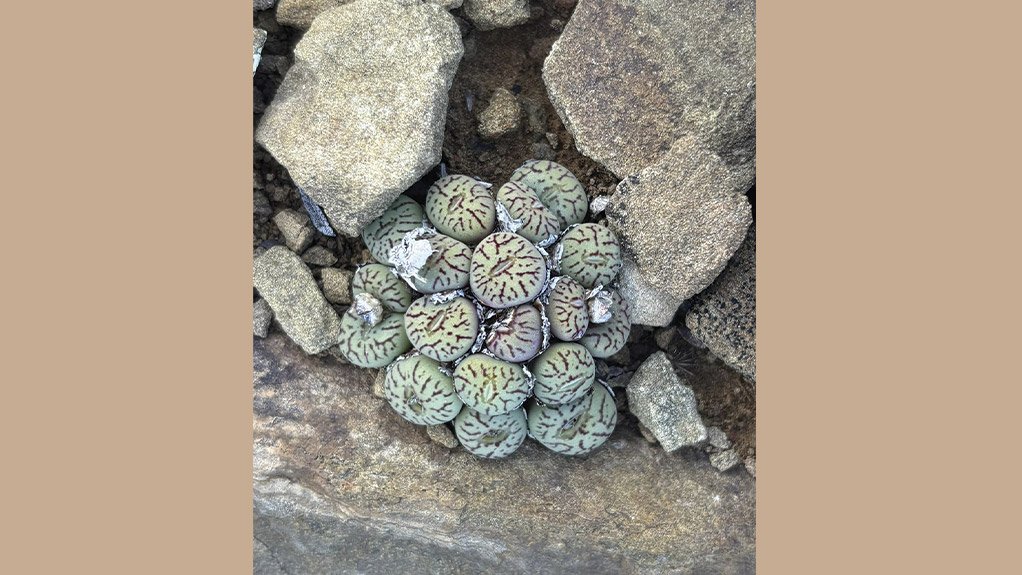
Survey poles demarcate the road servitude at the Karreebosch Wind Farm facility, reinforcing Concor’s commitment to sustainable development and environmental stewardship
Topsoil is preserved along a road servitude at the Karreebosch Wind Farm facility, ensuring environmental care during construction
At the Karreebosch Wind Farm facility, Concor ensures careful management of the road servitude close to the water body
A sandbag silt trap is installed at the watercourse crossing on the Karreebosch Wind Farm facility to safeguard the environment during construction
Regularly checking water levels at the Karreebosch Wind Farm facility forms part of ongoing monitoring to safeguard natural resources during construction
Pipe culvert with gabion baskets installed at the Karreebosch Wind Farm facility to ensure stable drainage and protect against erosion
Protecting biodiversity at the Karreebosch Wind Farm facility includes relocating delicate species such as the Forest Lily
The Button Plant is among the sensitive species rescued from construction areas on the Karreebosch Wind Farm facility
This article has been supplied.
Mitigating the environmental impacts of construction work needs careful planning and meticulous execution, especially in areas like the Karoo - where vegetation can be more sensitive to disruption and take longer to recover.
The 140 MW Karreebosch Wind Farm, being developed by Cennergi Holdings and G7 Renewable Energies between Matjiesfontein and Sutherland, will supply power to a private off-taker. The project will feature 25 turbines, each 100 m high with blades over 84 m long.
Environmental management has centred on protecting local watercourses and biodiversity, says Kevin Booth, Environmental Officer for Concor. While the rivers in this region are generally small and ephemeral or intermittent rivers they play a vital role as biodiversity hotspots.
“We design the layout of our working areas specifically to mitigate our environmental impact, particularly where the watercourses are,” Booth says. “This is done in compliance with both the project’s environmental management plan (EMP) and its water use licence (WUL).”
The WUL permits construction work within 32 metres of a watercourse, provided specific requirements outlined in the licence are met. All environmentally high-risk activities, however, must observe this buffer zone – such as refuelling which carries the risk of spillage and contamination.
“Our on-site environmental care must always prioritise the soil, organisms, plants, animals and the riparian environment of the watercourses,” he explains. “To achieve this, we limit our construction footprint as far as possible.”
The road network – to reach the sites where wind turbine towers will be placed – is one of the main infrastructural elements of the project, with the roads themselves occupying a width of 6 to 9 metres. The environmental impact assessment (EIA) allowed a total laydown area of some 18 hectares, but the Concor team strategically planned its laydown zones to reduce the area required, thereby minimising the footprint as far as possible.
Before any construction began, Concor’s surveyors demarcated the working area with surveying poles, ensuring that all activity is conducted within these zones. He highlights that earthmoving equipment moving outside of this area can severely damage the plant life.
“Within these servitudes, we carry out a formal ‘search and rescue’ process to preserve diversity,” he continues. “This means identifying those plants that are sensitive and moving them out of harm’s way to where they can continue to thrive.”
Each province issues a biodiversity permit that prescribes how the work is to be conducted. As the project traverses both the Western Cape and Northern Cape, the developer secured permits from both provincial authorities, with Concor responsible for executing the permit requirements.
“After removing the identified plants from the working areas, we place them in an on-site nursery to help them recuperate before they are transplanted back into the surrounding area,” Booth says. “The sites for transplanting must be carefully selected as the new position must have comparable topography and geological conditions.”
The search and rescue phase focuses on plants that need protection, as defined by ordinances from national and provincial environmental authorities. The Concor team – including botanical specialists – then prepares a detailed report on the plant relocations for the client and the authorities, so that the area can be effectively monitored over time.
“We conduct this monitoring to ensure that the search and rescue process is successful,” he says. “All this work is carried out in accordance with our onsite environmental monitoring and inspection plan.”
After the removal of sensitive vegetation, a clear-and-grub is done to remove topsoil – the ecologically important layer containing organic matter and its own seed bank. Once construction is completed; this material can be returned during rehabilitation - to ensure that indigenous vegetation can regrow.
Stormwater management is another critical element of preserving the environment, Booth explains, especially the separation of clean from ‘dirty’ water. While clean water refers to rainfall that lands on natural ground and flows off normally, there is also water that picks up sediment from the disturbed ground in the construction areas.
“Our priority is to limit the runoff from the construction areas – using strategies including silt traps and sandbags,” he says. “This prevents muddy water from leaving the work areas and finding its way into natural drainage lines.”
The Concor site team follows a dedicated stormwater and erosion management plan, which aligns with the requirements of the WUL. The plan details exactly how the work will be carried out, specifying the drainage systems, cut-off berms and other infrastructure as well as culverts, gabion baskets and rock packing.
With the movement of trucks, excavators and other vehicles on the site and road network, dust invariably becomes an environmental issue. Booth points out that this is mitigated through the application of a dust management plan – including the regular spraying of roads.
“To conserve water in a responsible manner, however, we carefully target our water spraying activity for optimal effect,” he says. “This helps to limit any detrimental impact of dust on communities, vegetation or workers on site.”
He highlights that managing waste is also an ongoing concern for Concor on the Karreebosch Wind Farm project and is governed by a dedicated waste management plan.
Communicating all these plans is as important as drafting them, he emphasises, explaining that the environmental aspects of the project also form part of the induction process for both Concor people and subcontractors.
“Everyone who comes to site undergoes an environmental induction, so that they are aware of management’s requirements and understand what we want to achieve with our planning,” he says. “It is critical that all stakeholders are on the same page; all our foremen also have copies that they can refer back to when checking for technical details.”
In addition to the main work site where the turbines will be located, the project also includes a 9 km powerline between the wind farm and the connection substation to the main grid. This too required the investment of considerable time and environmental expertise.
“While the distance of the powerline itself was less than 10 km, the specialist botanist and her team covered a distance of 150 km over 10 days – searching for sensitive plants and removing them from the working area,” he says.
He notes that construction clients are increasingly conscious of on-site environmental obligations and value Concor’s proactive detail-driven approach to ensuring full compliance while safeguarding natural resources.
Article Enquiry
Email Article
Save Article
Feedback
To advertise email advertising@creamermedia.co.za or click here
Comments
Press Office
Announcements
What's On
Subscribe to improve your user experience...
Option 1 (equivalent of R125 a month):
Receive a weekly copy of Creamer Media's Engineering News & Mining Weekly magazine
(print copy for those in South Africa and e-magazine for those outside of South Africa)
Receive daily email newsletters
Access to full search results
Access archive of magazine back copies
Access to Projects in Progress
Access to ONE Research Report of your choice in PDF format
Option 2 (equivalent of R375 a month):
All benefits from Option 1
PLUS
Access to Creamer Media's Research Channel Africa for ALL Research Reports, in PDF format, on various industrial and mining sectors
including Electricity; Water; Energy Transition; Hydrogen; Roads, Rail and Ports; Coal; Gold; Platinum; Battery Metals; etc.
Already a subscriber?
Forgotten your password?
Receive weekly copy of Creamer Media's Engineering News & Mining Weekly magazine (print copy for those in South Africa and e-magazine for those outside of South Africa)
➕
Recieve daily email newsletters
➕
Access to full search results
➕
Access archive of magazine back copies
➕
Access to Projects in Progress
➕
Access to ONE Research Report of your choice in PDF format
RESEARCH CHANNEL AFRICA
R4500 (equivalent of R375 a month)
SUBSCRIBEAll benefits from Option 1
➕
Access to Creamer Media's Research Channel Africa for ALL Research Reports on various industrial and mining sectors, in PDF format, including on:
Electricity
➕
Water
➕
Energy Transition
➕
Hydrogen
➕
Roads, Rail and Ports
➕
Coal
➕
Gold
➕
Platinum
➕
Battery Metals
➕
etc.
Receive all benefits from Option 1 or Option 2 delivered to numerous people at your company
➕
Multiple User names and Passwords for simultaneous log-ins
➕
Intranet integration access to all in your organisation












